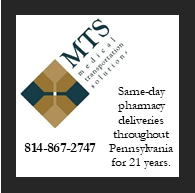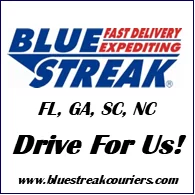Understanding Auto Insurance
Get help making better decisions about Auto insurance. Auto insurance is obviously very important to delivery drivers, yet many don’t understand it well. And using your vehicle for business adds a whole new dimension. Fear not. A4DD will unravel the mysteries for you. If you have questions that aren’t addressed here, Contact Us and we can assist you (and update this page to help others as well).
Topics:
When is Commercial Auto Insurance Necessary?
There are separate and distinct insurance policies for vehicles used for business. These go by the names of “Commerical Auto”, “Business Auto”, or “Motor Carrier” policies. Their terms and conditions are different from the personal auto policy provisions most of us are used to. And their cost is higher, partly because business vehicles typically are on the road a lot more. The big question is, do you really need to pay more for a commercial auto policy?
Box Trucks and Step Vans – Commerical auto insurance is always required for these larger vehicles (over 10,000 lbs GVW) and you normally won’t be able to purchase any other type of auto insurance for them.
Vans, Pickups, SUVs, Minivans, and Cars – For these vehicles most personal auto insurance policies DO cover delivery work. Many policies appear to exclude “business use”, but most give back coverage unless you are using (renting) a truck. Note you are not covered for transporting paying passengers (i.e. “livery”). Read your policy carefully to be sure since a few companies, like Progressive and Mercury, have added restrictions on delivery work. Regardless, you must obtain commercial auto insurance for these vehicles when:
Applying for motor carrier authority – state or federal (USDOT/FMCSA). But do you really need authority? For most local delivery operations, if you don’t cross state lines or if you stay within a “free trade” metro area, motor carrier authority is not needed. Think about pizza delivery, for example. Many contracting companies work with independent drivers without requiring you to have your own authority. A4DD can help you find these companies (check out our Get More Work benefits).
Required by a company contract – but you can always seek out contracting companies that don’t require more expensive commercial auto insurance and A4DD can help (check out our Delivery Work Center).
Required by insurance companies – even though most auto insurance covers delivery work, that doesn’t mean personal auto insurers WANT TO. If they learn that you are a delivery driver, they will likely non-renew your personal auto insurance and only sell you a commercial policy. You can always go to another insurer, but remember that committing fraud or misrepresentation is a criminal act that can take away coverage for all your claims. The good news is that if they don’t ask, you don’t need to tell. That’s how so many delivery drivers manage to hold onto their personal auto insurance for so long.
How Much Auto Insurance is Enough?
The answer depends of course on which auto insurance coverage you’re considering, but the Liability “limit” (amount) of insurance is usually drivers’ top concern.
State Minimums – Each state sets a minimum legal liability insurance limit. The Insurance Information Institute maintains a list of these minimum requirements. A “split” limit (e.g. 50/100/25) means that you need at least $50,000 insurance for injury to a single person, $100,000 for injury to multiple people in a single accident, and $25,000 for property damage. Split limits are found on personal auto policies. For commercial auto insurance, you would select the highest limit required (e.g. $100,000), and that single limit would apply to all claims.
Contract Standards – Many contracting companies require higher limits of insurance than the state minimums. For vans, pickups, cars, and SUVs, a common requirement is $100,000 or split limits of “100/300/50”. Trucks may be required to have a $500,000 liability limit. Some companies require drivers to match the limits required for federal/state motor carrier authority, or just set a $1 million limit standard, which comes with a higher cost.
Motor Carrier Authority – To qualify for federal motor carrier authority, drivers of light vehicles under 10,000 lbs Gross Vehicle Weight (GVW) need a $300,000 liability limit. Heavier vehicles normally require a $750,000 limit though higher limits are required for certain operations (e.g. hazardous freight). In practice, most truck drivers get a $1 million limit, which costs about the same. Motor carrier authority requires not just the right amount of auto insurance, but also the right kind: commercial auto insurance. Commercial insurance is much more expensive. Be sure you really need motor carrier authority if you do mainly local delivery work (see the above section on this).
The Different Auto Insurance Coverages
Auto insurance is actually made up of a number of different types of insurance coverage. Let’s go over what each is called and how it protects you.
Auto Liability – Commercial auto liability covers your financial responsibility if you are at fault in an accident (work-related or personal) and people are injured or property is damaged. It also pays for attorney’s fees to defend you from accident-related lawsuits.
Auto Medical Payments – Pays for the injury-related expenses or medical bills you incur as a result of an auto accident, up to the limits on your policy. It’s not meant to replace your health insurance, but rather supplement you in the event some of your expenses may not be covered by your health insurance policy.
Uninsured Motorists Liability (UM) – Provides bodily injury protection for the driver and passengers if a driver of another vehicle is legally responsible for an accident causing injury but fails to carry auto liability insurance.
Underinsured Motorists Liability (UIM) – Provides the same protection as UM coverage, except that it’s meant to cover the gap in payments you can recover when the other driver fails to carry a high enough limit.
Physical Damage – Collision – Collision coverage provides protection against loss or damage to a covered auto resulting from the impact with another vehicle or object. Collision losses are paid regardless of fault.
Physical Damage – Comprehensive – Also called, “Other Than Collision”, this coverage provides protection against loss or damage to a covered auto resulting from a cause other than a collision or upset of the vehicle. This could include theft, vandalism, hail, flood and fire.
What Are Business Auto Coverage Symbols?
One notable difference between business auto and personal auto insurance is how policies and quotes show which coverages apply to which vehicles. Number symbols and definitions are used for this. Symbols can range from 1 to 10 or higher. You are likely to encounter these in particular:
Symbol 7 – indicates that coverage applies for those autos specifically described on the policy. Auto liability coverage also applies to temporary substitute vehicles you do not own if a described vehicle is out of service due to loss or damage, breakdown, repair, or servicing. This symbol also provides coverage for newly acquired or replacement autos so long as they are reported to the insurance company within 30 days.
Symbol 8 – indicates that coverage applies for hired, leased, rented or borrowed autos.
Symbol 1 – indicates that coverage applies for any auto. This is the best symbol to have, but it is not commonly available. Some contracting carriers may try to require you to have symbol 1. Often you can negotiate — especially when you always use the same vehicle or a temporary substitute, which Symbol 7 covers.
Are Extra Protections Available?
Business Auto applications and policies may list the following additional coverages:
If you purchase insurance for damage to your vehicle, you may also select from these optional extras:



